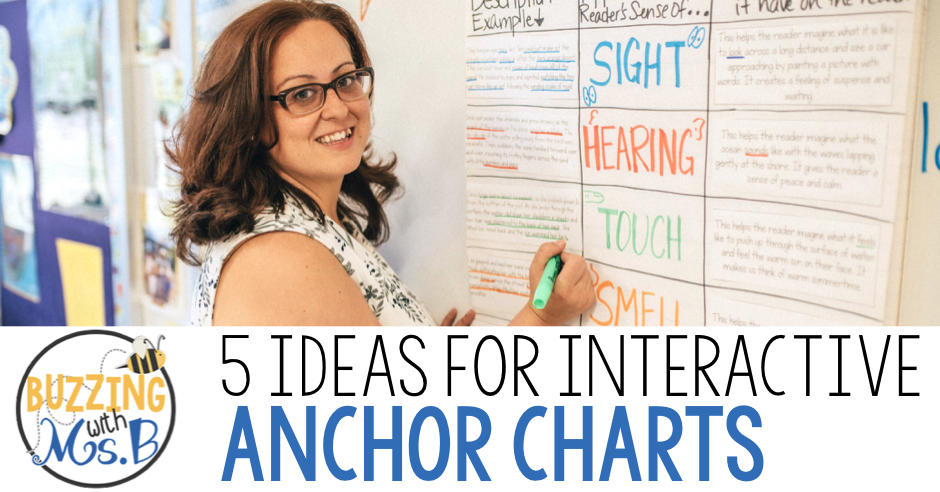In my earlier article about anchor charts, I emphasized certain key principles.
Anchor charts should be developed collaboratively with students during a lesson, not merely as classroom decor. The objective is to have evolving charts that can be modified as students grasp new concepts. To prevent these charts from merely blending into the background, it’s crucial to make them engaging. Interaction is key. When students engage with these charts, they are more inclined to understand the lessons and strategies illustrated. Moreover, when students see their own contributions on these charts, it fosters a sense of ownership over their education. Continually referencing past “anchor” lessons aids in reinforcing these lessons in students’ minds. Here’s how to achieve this:
1. Sticky Note Exercises
Encourage students to apply the skill or strategy being taught. For instance, when comparing texts, students can note the main lesson from a text on a sticky note, allowing us to visually organize them on the chart. Remember, aesthetically pleasing charts are beneficial only if students actively use them. Enhance their utility in English Language Arts (ELA) lessons by incorporating sticky notes, dynamic graphic organizers, and other tools to capture student input, like a chart about drawing connections.
2. Utilizing Task Cards
Task cards are an effective tool for students to practice particular skills. Using an anchor chart focused on the author’s intent, students can pinpoint evidence in the text supporting the author’s purpose. The immediate application of this technique solidifies the concept, which we can then document on our chart. Group activities, such as analyzing paragraphs to derive character insights, can also be incredibly engaging. Embrace interactive elements like graphic organizers to ensure your ELA charts genuinely involve the students, such as a chart centered on author intent.
3. Evolving Lists
Interactive charts that students can contribute to over time serve as ongoing reminders of their educational journey. For instance, when studying themes or character descriptions, students can augment the chart with relevant book titles. Visual cues, like book cover images, can further aid in retention. The emphasis remains on creating interactive ELA charts that are both functional and engaging, with tools like sticky notes and dynamic graphic organizers. Consider charts that focus on themes or character traits.
4. Graphic Organizers and Sticky Notes
Empty graphic organizers can be transformed into invaluable anchor charts by visually structuring information. With a plot structure chart, for example, students can identify key narrative elements and sequence events from various stories. These interactive elements not only enhance comprehension but can be repurposed for other lessons, such as cause and effect.
5. Documenting Progress
Inspired by Lead4ward, these interactive charts spotlight four focal areas: the texts reviewed, summarizing techniques, inferential thinking, and vocabulary. Each chart is genre-specific. As lessons progress, updates to the chart are made. For instance, when tackling new texts, pertinent student-made notes can be added. Highlighting specific question types related to summaries and inferences can also be beneficial. And as new vocabulary emerges, students can jot these down on sticky notes, adding them to the chart, providing an effective recap tool.
I’ve found these methods extremely effective in using anchor charts as interactive learning tools. Which strategy intrigues you the most?

